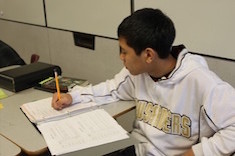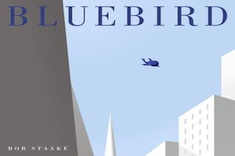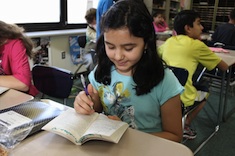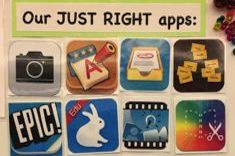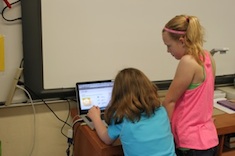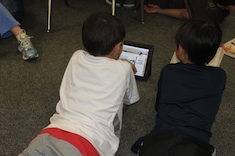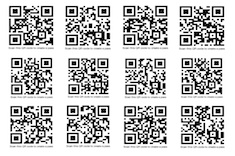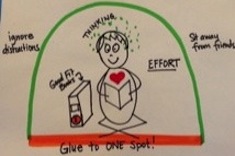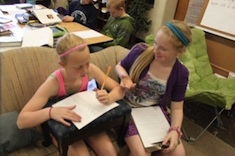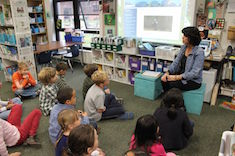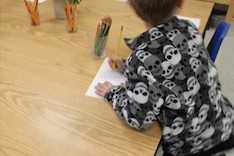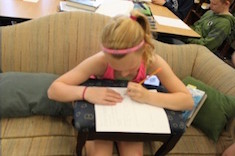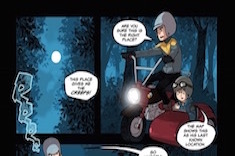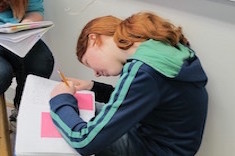Articles
Here is where you’ll find all the latest print features from our contributors. If you’d like to browse specifically by grade level, topic, or contributor, you can use the links in the right sidebar.
Latest Content
The Intersection of Social Studies and Language Arts
Melanie Meehan writes about how teachers in her state are dealing with the time-crunch issue in social studies instruction by naturally integrating more social studies into the language arts program.
Risk and All
Tom Romano meets with Kacie, a student writing about an experience that shames her. He ponders the importance of facing the darkest parts of our experiences when we write. This is an exclusive excerpt from Tom's new book, Write What Matters.
Exploring the Writing Process
Dana Murphy considers the differences between authentic writing processes and what we teach in schools.
Debating How to Begin Stories
Melanie Meehan shares a minilesson using student writing as a model for experimenting with leads.
Modifications for English Language Learners
Stella Villalba shares some modifications that can help English language learners demonstrate skills and knowledge.
Knowing Ami: Silent Communication with an English Language Learner
Katie DiCesare finds patience and observation are the keys to helping a first-grade English language learner who is in the silent period.
Teaching Inference Through Picture Books
Katherine Sokolowski explains why picture books are useful for teaching inference to intermediate students, and shares some of her favorites.
Getting Mentor Texts in Students’ Hands
Jillian Heise discovers that her students need more access to the mentor texts she reads aloud, so she develops strategies to get them to students.
Mentor Texts and Memoir Writing
Gretchen Schroeder finds one mentor text has many uses as her high school students explore memoir writing.
What I Learned About Teaching Writing from My Trainer
Jodi Mahoney applies principles from one process to another in comparing writing and working out with a trainer.
Jumping into Just-Right Apps
We spend a lot of time in elementary classrooms matching students to “just-right” books. Katrina Edwards uses similar principles to help her first-grade students pick just-right apps. The essay includes a downloadable chart of appropriate literacy apps for young learners.
Tech Anchor Charts
A daunting task for teachers is to help students learn to use new tech tools, as well as understand community standards for each one. Katherine Sokolowski finds tech anchor charts are a great way to provide ongoing support to students as they navigate new software and apps.
Student Writing, Filters, and Social Media
Ruth Ayres explains why filtering is one of the most important concepts writers need to understand in this social media age, and she shares a simple lesson and chart for teaching students how filtering works.
Alternatives to Home/School Reading Logs
There may be few literacy homework assignments more despised by families than the dreaded reading log. Gigi McAllister proposes some alternatives, and explains how she keeps families in the loop on reading progress.
Bringing Writers’ Voices Home with QR Codes
Bitsy Parks has her first-grade students record their writing as part of a regular workshop and assessment routine, and then uses QR codes to share the recordings with families and the larger community.
Stamina Bubbles
“Why do you always say ‘Happy reading!’ to us?” This question from a first grader leads Katrina Edwards to develop visual support tools for building stamina during reading workshops.
Ways into Personal Narratives
Katherine Sokolowski describes some Ways into Personal Narratives that use visual tools to build the home/school connection and stronger prewriting skills.
Engaging a Room Full of Third Graders
Melanie Meehan works with a third-grade teacher to rouse interest from a class of compliant students who lack engagement.
Invitations for Narrative Writing
Kim Campbell suggests activities and prompts to energize narrative writing with teens.
The Morning Story
Shari Frost encourages teachers to reconsider “the morning story” routine, a rote copying activity still prevalent in many primary classrooms. Shari offers some fun and practical alternatives.
Resources for Quick-Writes
Katherine Sokolowski shares some of her favorite resources to jumpstart student interest in writing.
Back to Basics: Choice
Ruth Ayres explores the boundaries of student options in writing workshops.
Reorganizing the Classroom Library
Gigi McAllister reorganizes her classroom library checkout system, and finds that a little upfront investment in time pays big dividends all year long.
Moving Beyond Bed-to-Bed Stories in First Grade
Katrina Edwards moves her first graders from writing "bed-to-bed" stories early in the year with a mentor text and writing activity that promotes self-discipline and a growth mindset.
Using Webcomics in Classrooms
Katherine Sokolowski explains why she uses webcomics in her literacy workshops, and shares an extensive list of her favorite online sources.
Reading Pictures in High School
Gretchen Schroeder melds famous artwork with literacy instruction in her high school classroom.
Visual Reading for Writing
Carly Ulmer uses visual literacy to build writing skills with her seventh graders through two powerful minilessons.
Close Reading for Comparison in Fifth Grade
Katherine Sokolowski uses a fascinating picture book to build close reading skills with her fifth graders. The key is selecting a text that holds up well through multiple readings.
Literary Analysis and Authenticity in Middle School
Christy Rush-Levine finds the best way to help her middle school students learn to read closely for literary analysis is through student writing. They begin with analyzing student exemplars from the Common Core, and then move to shared texts as they hone their skills.
Close Encounters with Text: Reading Many Ways
Jan Burkins and Kim Yaris find their reading processes as adults informs the way they view close reading with students.
Browse Content By
Type
Category
- Assessment Tools
- Big Fresh Archives
- Booklists
- Choice Numeracy
- Classroom Design
- Common Core
- Community Building
- Conferring
- Content Literacy
- Digital Literacy
- English Language Learners
- Equity
- Family Relations
- Free Samples
- Guiding Groups
- Leadership
- Literacy Coaches
- Mentor Texts
- Minilessons
- New Teacher Mentors
- Podcasts
- Poetry
- Quote Collections
- Reading Strategies
- Self Care
- Struggling and Striving Learners
- Talking and Listening
- Teacher Study Groups
- Teaching Reading
- Teaching Writing
- Word Study and Vocabulary
Author
- Melissa Quimby
- Nawal Qarooni
- Gwen Blumberg
- Julie Cox
- The Lead Learners
- Hannah Tills
- Josie Stewart
- Ruth Metcalfe
- Mallory Messenger
- Becca Burk
- Jodie Bailey
- Vivian Chen
- Mary Brower
- Tiffany Abbott Fuller
- Stephanie Affinito
- Ruth Ayres
- Leigh Anne Eck
- Heather Fisher
- Shari Frost
- Julie Johnson
- Suzy Kaback
- Gigi McAllister
- Shirl McPhillips
- Melanie Meehan
- Cathy Mere
- Debbie Miller
- Tara Barnett and Kate Mills
- Tammy Mulligan
- Dana Murphy
- Bitsy Parks
- David Pittman
- Brenda Power
- Heather Rader
- Matt Renwick
- Mandy Robek
- Christy Rush-Levine
- Gretchen Schroeder
- Jen Schwanke
- Brian Sepe
- Katherine Sokolowski
- Stella Villalba
- Jennifer Vincent
Grade Level
Choice Literacy Membership
Articles
Get full access to all Choice Literacy article content
Videos
Get full access to all Choice Literacy video content
Courses
Access Choice Literacy course curriculum and training



